Prøve GULL - Gratis
can fynbos birds KEEP THEIR COOL?
African Birdlife
|July/August 2025
For the past 10 years, record-breaking temperatures have followed one another, culminating in 2024, the first full calendar year in which the rise in global temperatures surpassed the threshold of 1.5 degrees Celsius.

This has already resulted in widespread adverse effects on biodiversity, impacting virtually every habitat on earth. Importantly, we are witnessing these rising temperatures right on our doorstep. Recent research by Williams et al. (2021) has shown that in the fynbos region, temperatures have been increasing at a staggering rate. Between 1901 and 2006, mean annual temperatures increased by three degrees Celsius - and are continuing to rise.
The fynbos biome is considered a global conservation priority due to its high levels of biodiversity and endemism. However, it is also expected to experience some of the greatest losses in biodiversity due to climate change. This may pose a risk to birds, as fynbos is home to seven endemic species (six passerines and the Fynbos Buttonquail) along with several other indigenous bird species. These birds are important not only intrinsically, but because they play a role in ecosystem functioning and in South Africa's avitourism sector, contributing to job opportunities and GDP.
Denne historien er fra July/August 2025-utgaven av African Birdlife.
Abonner på Magzter GOLD for å få tilgang til tusenvis av kuraterte premiumhistorier og over 9000 magasiner og aviser.
Allerede abonnent? Logg på
FLERE HISTORIER FRA African Birdlife
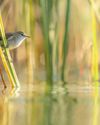
African Birdlife
stories begin at EYE LEVEL
ALTHOUGH I HAVE been taking photographs since 1998, it wasn't until 2019 that my hobby evolved into a serious pursuit. That's when I began to see photography not just as a means of capturing a moment, but as a form of art - something that can stir emotion, spark wonder and tell a deeper story.
1 mins
July/August 2025
African Birdlife
ALBERT the Wandering Albatross
Ahoy, shipmates, grab a pew and let me spin my yarn.
3 mins
July/August 2025
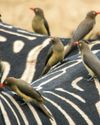
African Birdlife
I'll be back...
Southern African populations of oxpeckers were hit by triple hammer blows during the late 19th century and much of the 20th.
2 mins
July/August 2025

African Birdlife
BINDO and SABAP2
A match made in data science
2 mins
July/August 2025
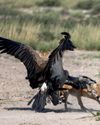
African Birdlife
PREDATORS of the pan
As regular visitors to Mabuasehube in the Botswanan sector of the Kgalagadi Transfrontier Park, we have often seen vulture feathers lying in the area of the waterhole at Mpayathutlwa Pan and have frequently observed a pair of black-backed jackals in the vicinity.
1 min
July/August 2025
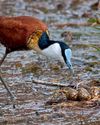
African Birdlife
Jacana & the egg thief
While on a photo expedition in the Richtersveld National Park with my brother Peter, we were watching one particular African Jacana on the Gariep River.
2 mins
July/August 2025
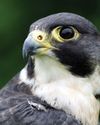
African Birdlife
A STRIPE FOR ANY OTHER PURPOSE?
Uncovering the adaptive complexities of falcons' malar stripes
2 mins
July/August 2025
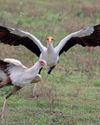
African Birdlife
grassland GLADIATORS
The Secretarybird is a highly soughtafter species for most birders on their first visit to Africa. It looks so strange, like a cross between a stork and an eagle. Even though it is widespread, occurring in almost any suitable habitat (grassland, open savanna and Karoo shrubland), it's generally uncommon.
1 mins
July/August 2025

African Birdlife
SECRETS SKY
Jessica Wilmot is the driving force behind BirdLife South Africa's Flyway and Migrants Project, working across borders to safeguard some of the planet's most threatened species and habitats. Supporting BirdLife International's East Atlantic Flyway Initiative, Jessica is at the heart of efforts to keep our skies alive with birds, particularly the enigmatic European Roller, which is her current focus and passion.
6 mins
July/August 2025

African Birdlife
Southern SIGHTINGS
Autumn is generally known to be quieter in terms of rarities across southern Africa, but the review period still had a few surprises for us, including a new species for the subregion. As always, none of the records included here have been adjudicated by any of the subregion's Rarities Committees.
3 mins
July/August 2025
Listen
Translate
Change font size
